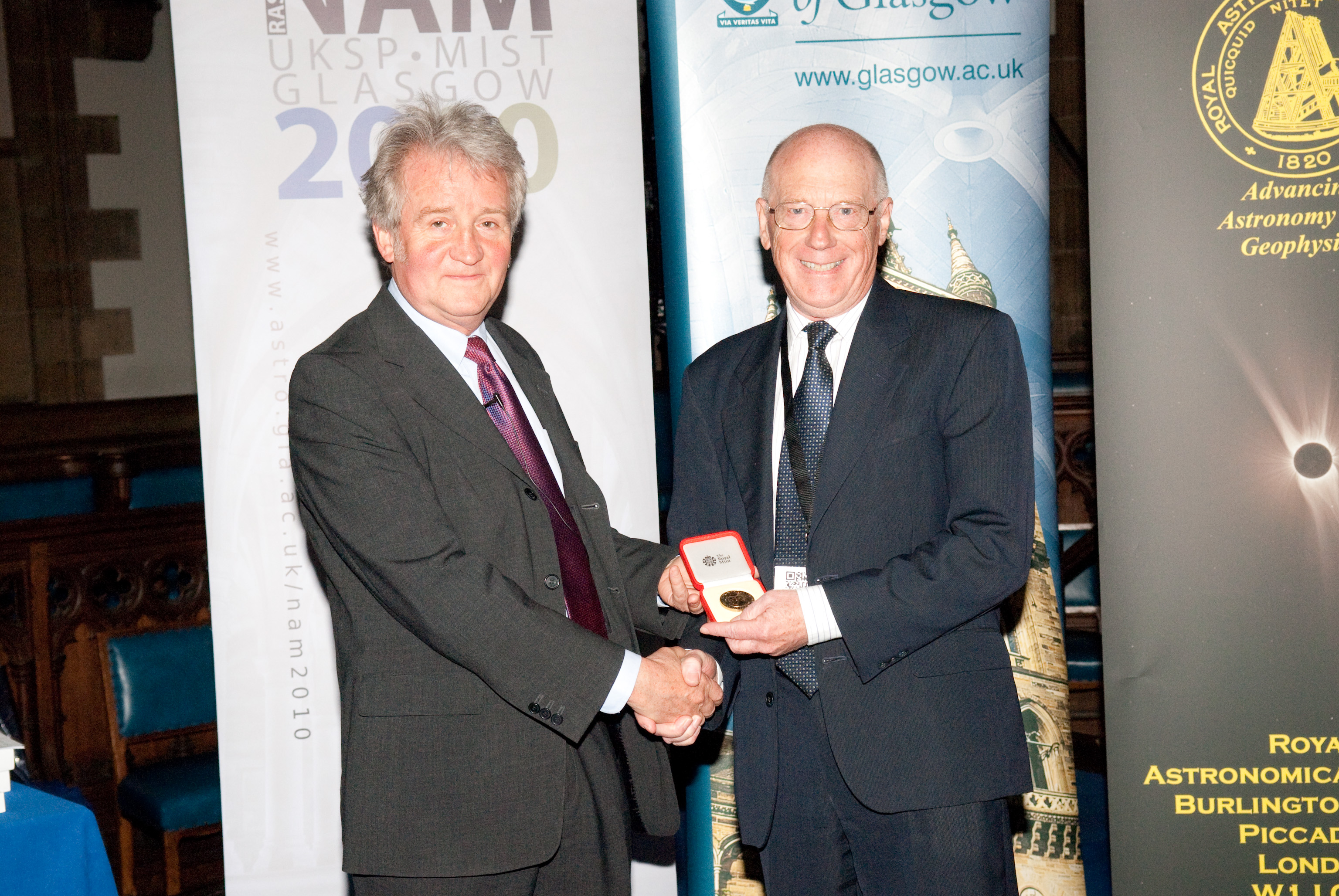History of Astronomy at the University of Hertfordshire
Overview
We start with a history of Hatfield & surrounding areas with links to the development of Astronomy & Aeronautics, the latter being important in the original development of the then de Havilland College Aeronautical Technical College, later to become the Hatfield Polytechnic and then the University of Hertfordshire.
Early Astronomy in nearby St Albans
In November each year, graduands of the University of the Hertfordshire gather in the Cathedral and Abbey Church of St Alban to take their degrees. For physics and astronomy students, this is a particularly apt setting; seven hundred years ago the abbot of the Great Abbey was one of England’s most remarkable medieval scientists – Richard of Wallingford. Richard was a Benedictine monk with a fascination for mechanical devices that could be used to calculate and represent celestial motions. Educated at Oxford, he had written the Quadripartitum, a major treatise on spherical geometry, and invented the Albion, perhaps the first astronomical supercomputer. The ingenious and intricate geometrical construction of the Albion facilitated the determination of parallax, planetary motions, conjunctions and eclipses, alongside the normal functions of an astrolabe and quadrant. Richard also designed one of Europe’s earliest (and certainly most elaborate) mechanical clocks with its own suite of astronomical functions including solar and lunar motions and the variation in the tides. The clock was to be fabricated in iron and installed in the Abbey on the wall of the southern transept. Construction began whilst Richard was Abbot and Edward II is reported to have been shocked that making it was given precedence over the restoration of the fabric of the Abbey: Richard rejoined that whilst those that succeeded him would doubtless be capable of organising repairs, he alone knew how to design and make the clock – his father had been a blacksmith. It is unsurprising then that when Richard died of leprosy, work on the clock was suspended although reports suggest it was eventually finished in 1390, over fifty years after Richard’s death. The original clock sadly no longer exists although several reconstructions exist.
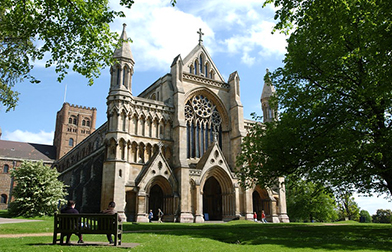
Beginnings of the de Havilland Aircraft Company
Our story continues with another clock. It belonged to the Walker family who lived in Highgate in Victorian England. Unbenown to the family, their son ‘C.C.’ had liberated the mechanism from the clock and adapted it to drive his small telescope – the removal was only revealed when the clock was sent to a jumble sale and the empty shell returned by its irate purchaser! He took some rather nice images of the Moon, which were generously donated to the Centre for Astrophysics Research a few years ago. It says something for the speed of film emulsions in the late nineteenth century, that the exposures were typically about a thousandth of what might be required today. As a young man, C.C. became interested in aviation and wrote to Geoffrey de Havilland asking if he might work for him, without salary at first, at least until he had proved his usefulness. De Havilland had built his own plane from scratch powered by a modified motorcycle engine of his own design. These were the pioneering days of powered flight and, on its first successful flight, a colleague was required to lie on the ground as the plane attempted to gather lift to confirm it had indeed become airborne. C.C. would become a founding director of the de Havilland Aircraft Company which moved its base to Hatfield in the early nineteen thirties. The fact that the company could expand in a time of depression was a testament to the enduring popularity of one of its best known designs – the DH Moth.
Around Hatfield, road and building names recall the golden age of aviation and allow us to forget for a moment the indignity of a vestigial hanger that currently houses a fitness centre. Outside the Comet Hotel is a model of the DH aircraft, the twin-piston engine Comet Racer named ‘Grosvenor House’, that won the MacRobertson Trophy in 1934 – a speed race from London to Melbourne. It has the beautiful lines that characterize so many de Havilland aircraft. Indeed, these reflect the recurrent philosophy of C.C. Walker that there was a potential economy in speed, and hence a value in streamlined design. Next time you have a seemingly impossible deadline to meet, you might like to reflect that ten months before the race took place, not even a plan existed of this remarkable aeroplane. In the event, it had a range of nearly five thousand kilometres at an average speed of 350 km/hr; it took 71 hours to make the trip, about three times the transit time of a jumbo jet. The wooden construction of the DH88 Racer was mirrored in the wartime development of the Mosquito, an equally remarkable aircraft that also lends its name to the collection of de Havilland memorabilia displayed in a nearby museum in London Colney.
Before moving into the jet age, a quick diversion is in order to gather evidence for Hatfield’s strategic importance at the time. Eddie Chapman, a small-time crook who would be played by a louche Christopher Plummer in a film of his life, offered to blow up Hatfield airfield to prove his credibility as a spy. The fact the film is called Triple Cross will tell you that the airfield was never in serious danger. However Jasper Maskelyne, a London magician (who also invented the coin-operated toilet door) was called in to fake the aftermath of an explosion that might at least deceive aerial photography and enable Chapman to continue his double (or triple) bluff. The name might sound familiar – Jasper was a descendant of Neville Maskelyne, the fifth Astronomer Royal. In 1774, Neville Maskeleyne undertook a determination of the mass and hence density of the Earth based on observing the deflection of a plumb bob by a large mountain, Schiehallion, in Scotland - he was within 20% of the right answer.
Filming on location: Hatfield airfield
Actually, the airfield would be blown up half a century later, with somewhat more advanced film trickery. Steven Spielberg and Tom Hanks came to Hatfield to shoot sequences of first Saving Private Ryan and later Band of Brothers. Production designers apparently cleaned out clothing stock from the town’s charity shops and aeroplanes and smoke filled the sky during an unusually noisy summer vacation. University students worked on some of the models for these productions, as they have on many others in the thriving local film industry. The replica of Galileo’s telescope that you will see on stage during the conference was made by an undergraduate, Tina Jane Moore, as part of her final year project on the Model Design programme.
Anyway, we move on from Agent Zig-Zag, as Chapman was known, to Spider Crab. Thankfully not a genetically modified superhero from a comic book too far, Spider Crab was the code name for another aircraft, the Vampire – although it’s not altogether clear why something called a Vampire needed a code name. Powered by de Havilland’s Goblin engine, it was the first jet to operate from an aircraft carrier. In the late nineteen forties, the great challenge to aeronautical design was breaking the sound barrier and the de Havilland DH108 became the first British jet aircraft to achieve Mach 1, albeit in a partially controlled dive. Just to show this speed lust has not deserted Hatfield, some University aerospace students have recently designed and built an impressive rocket sled for impact testing that also comfortably breaks the sound barrier on a eighty metre horizontal wire.
The quest for speed brings us to the Comet airliner built in Hatfield in 1949. The tragic early history of this aircraft should not overshadow the wonderful accomplishment of de Havilland in developing and building the world’s first jet airliner - and thus making international observational astronomy possible! The metal fatigue problems that beset the first model not only allowed American competitors to catch up, but meant pioneering studies, from which all airlines ultimately benefited, were costly in every sense to the company.
Space at Hatfield
Space entered the picture in the fifties with the development of missiles designed as part of the national nuclear deterrent. The test facilities became a distinctive local landmark as no effort was made to disguise the site which was clearly visible (and audible) from Manor Road. Fortunately, the Blue Streak missile discovered a happier role as the lowest stage in the European Space Launcher Programme, Europa, where it proved reliable and immensely powerful.
The University is a natural descendant of the de Havilland Aeronautical Technical College, the trademark first assignment for new trainees was to make their own tool box. Some of the early courses in the Technical College (and later Polytechnic) were designed for satellite groups working for the firm. In 1960, de Havilland was bought by Hawker Siddeley in a major restructuring of the British aircraft industry, and this in turn became part of the nationalised British Aerospace in 1977. Although this closed in 1992, there is still much local expertise e.g. in the then School of Mathematics, where one of Hatfield’s specialisms in the nineteen sixties was the optimisation of spacecraft trajectories. There are also close links with EADS Astrium [now part of the Airbus group] in Stevenage who were one of the generous sponsors of the UK National Astronomy Meeting held in 2009 as part of the European Week of Astronomy and Space Science (EWASS), combined with the European Astronomical Society's Joint European and National Astronomy Meeting (JENAM). It also celebrated the International Year of Astronomy, with a record attendance of over 1100. A prototype Mars rover [precursor to the now-named Rosalind Franklin, ExoMars rover, is part of the international ExoMars programme led by the European Space Agency and the Russian Roscosmos State Corporation, scheduled to launch in July 2020] was housed in a marquee with a red sandy floor mimicking a Martian dune.
Beginnings of Taught Astronomy at the University
Astronomy as a subject in its own right at the University was established by J.C.D. (Lou) Marsh. He was working as a lecturer in electrical engineering and decided to put up a trial course of lectures on general astronomy. When this met with an enthusiastic response, he suggested in 1967 that it be offered as a regular subject and an observatory be built to support the course. With backing from the then Polytechnic Director, Sir Norman Lindop, and others in the senior management of the University, it was possible to offer the first courses in 1969.
The University Observatory is located at Bayfordbury, in a country estate about half an hour’s drive from the main campus offering some respite from insidious town lighting. The Observatory was opened by Alan Hunter, then Deputy Head of the Royal Greenwich Observatory – the Isaac Newton Telescope (INT) was only a few years old then and working from the Sussex countryside. Bayfordbury is one of the UK’s finest teaching observatories hosting eight domed telescopes with apertures up to 0.5 m. There is a dedicated video astronomy dome for planetary ‘lucky imaging’ and a 4.5 m radio dish. This will be supplemented shortly with two further receivers to add interferometry to the site’s capabilities. Historically important observations of occultations by Titan, in early efforts to study the thickness of its atmosphere, were made by Bob Forrest, who has managed the technical running of the Observatory through four decades. Chris Kitchin, who you may know best as the author of Astrophysical Techniques now in its 4th edition, and Iain Nicholson, another celebrated astronomical writer, were early Directors of the Observatory and lecturers at the University. One of the highlights of recent times was the observation of a gamma ray burst optical afterglow – the first by a UK university observatory. A long-term friend of the Observatory, Sir Patrick Moore was surrounded by old and new friends when he opened the award-winning control building named in his honour in 2000.
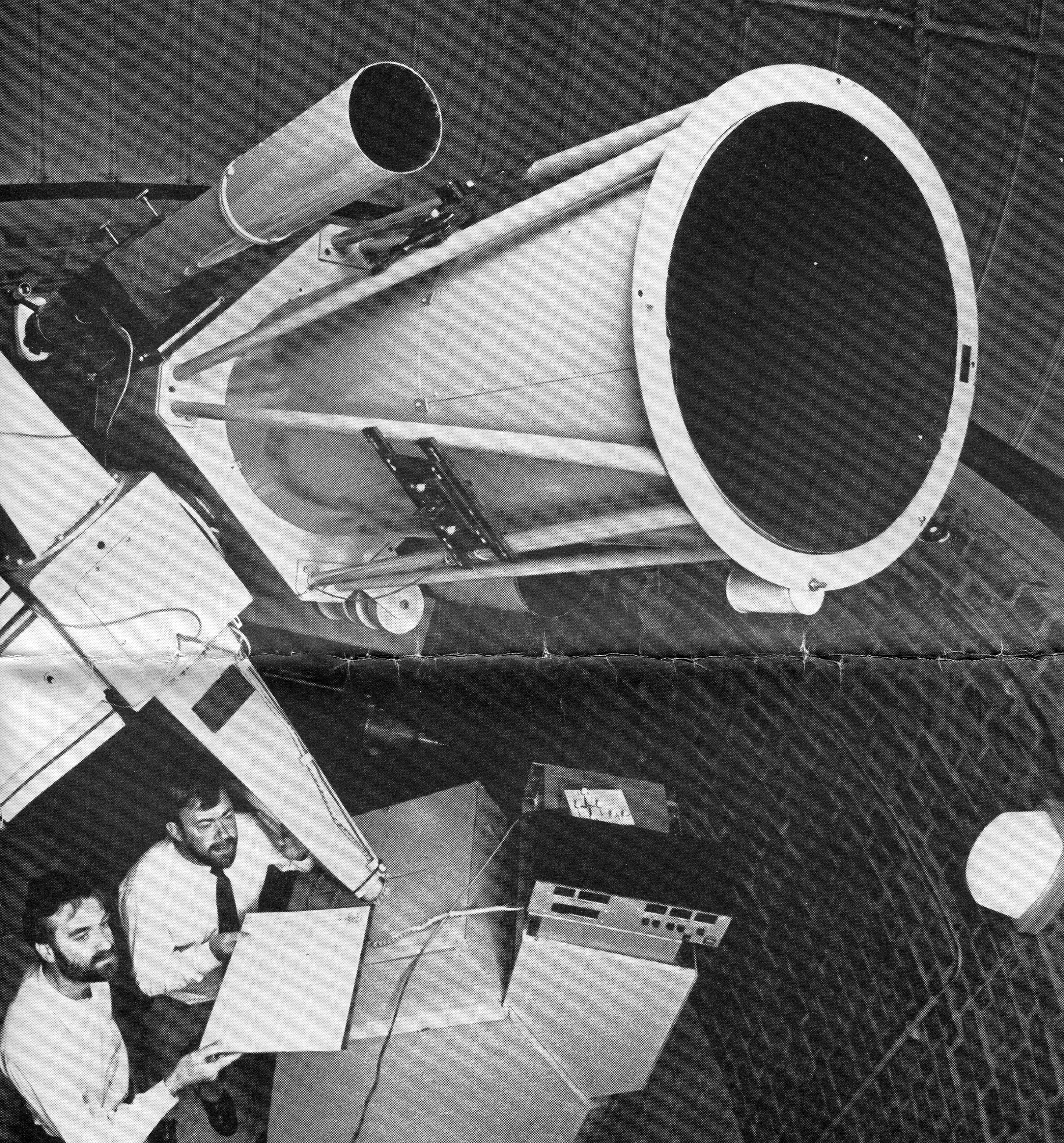
Iain Nicolson with Bob Forrest at the Lou Marsh Telescope
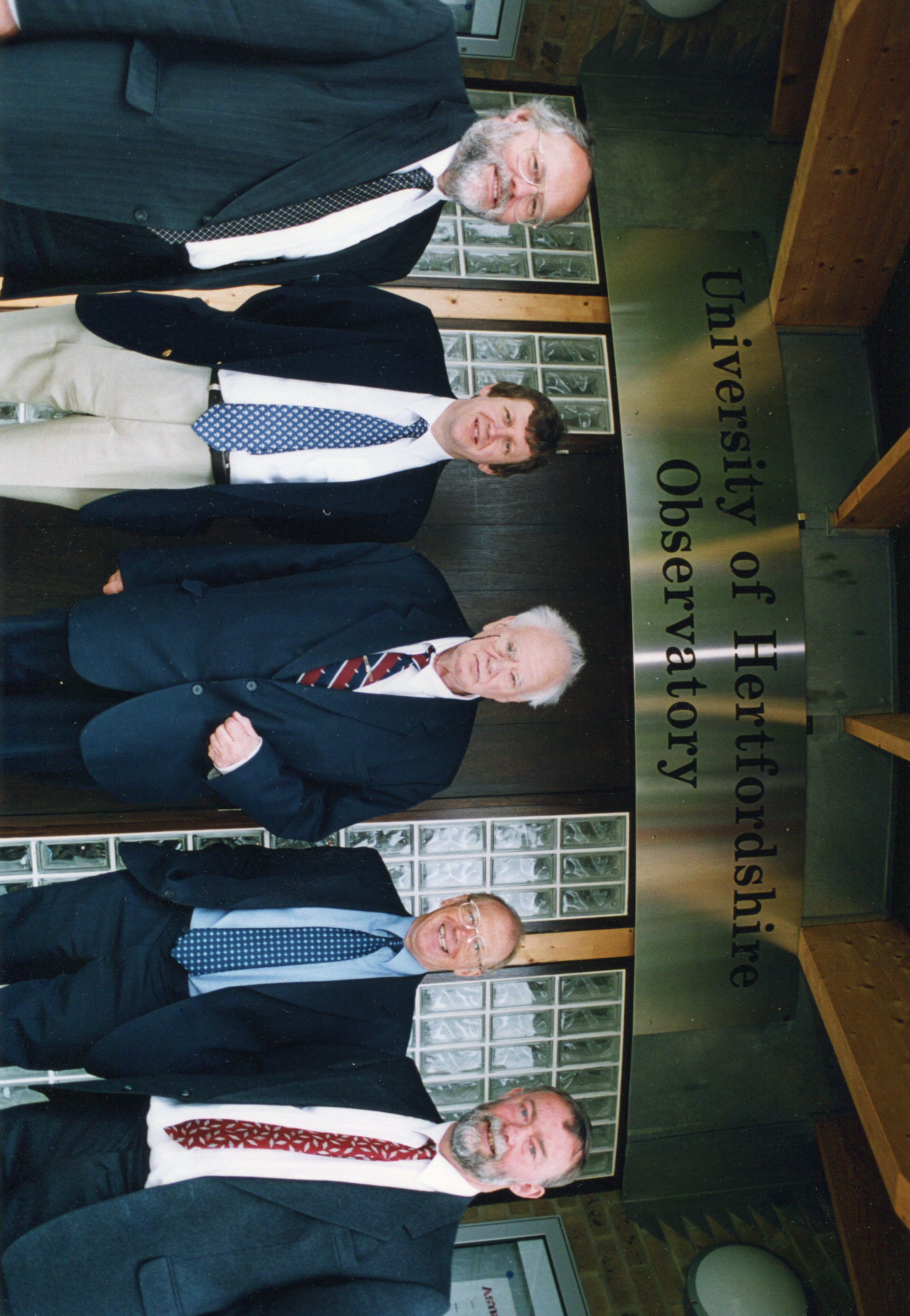
Patrick Moore opening the University Observatory Control Building in 2000, named in his honour. Left to right are: Dr Chris Kitchin (Member of the Division of Physical Sciences), Professor Dave Axon (Head of Physical Sciences), Patrick Moore, Professor James Hough (Dean of Natural Sciences), Iain Nicolson (Member of the Division of Physical Sciences).
Beginnings of Astronomy Reseach at the University
Hatfield’s early research reputation rests on the detection and modelling of polarised radiation in active galactic nuclei, star forming regions and planetary nebulae. Polarimeters were designed and constructed in-house, a programme initiated and driven by a then University physics lecturer, Jim Hough, who was the first Director of Astronomy Research (in the much expanded research centre) nearly forty years later. The first polarimeter was built here in the early nineteen seventies. It was a stand-alone instrument operating in the near-infrared that employed first a PbS and then an InSb detector. This was followed by a series of Hatfield polarimeters, working in the optical and infrared, used on the UK Infrared Telescope (UKIRT) in Hawaii and the Anglo-Australian Telescope in New South Wales, producing 34 refereed papers from 28 observing runs. In the early nineties, the emphasis switched to the construction of polarimeters as additional facilities for observatory imagers and spectrometers including dual-beam polarimetry systems for instruments at the AAT and UKIRT, and the polarimetry optics for the Japanese instruments TRISPEC and SIRIUS. Latest in the line was PlanetPol, that achieved polarization sensitivities of better than 1 part in a million, designed to detect extrasolar planets from the polarized signal of reflected light from the planetary atmosphere. One of the most provocative discoveries of the group was the serendipitous discovery of high degrees of circular polarization in the Orion star forming complex and the speculation that this could be linked to the molecular homochirality essential for life.
In spring 2010 the Royal Astronomical Society (RAS) awarded the Herschel Medal to Professor James Hough. The medal, awarded once every two years for outstanding work in observational astronomy, was presented to Professor Hough at the National Astronomy Meeting in Glasgow. It recognises his significant contribution in polarimetry, where astronomers measure the oscillations in light and other electromagnetic waves. The medal was presented by Professor Andy Fabian, President of the RAS.
Nowadays the research interests of the Centre for Astrophysics Research, with ~60 researchers, also embrace high and low frequency radio, x-ray and gamma ray astronomy and include a very wide range of galactic and extragalactic programmes.Astronomer and musician Brian May has endowed a studentship awarded to a student of outstanding promise studying toward a Masters research degree.
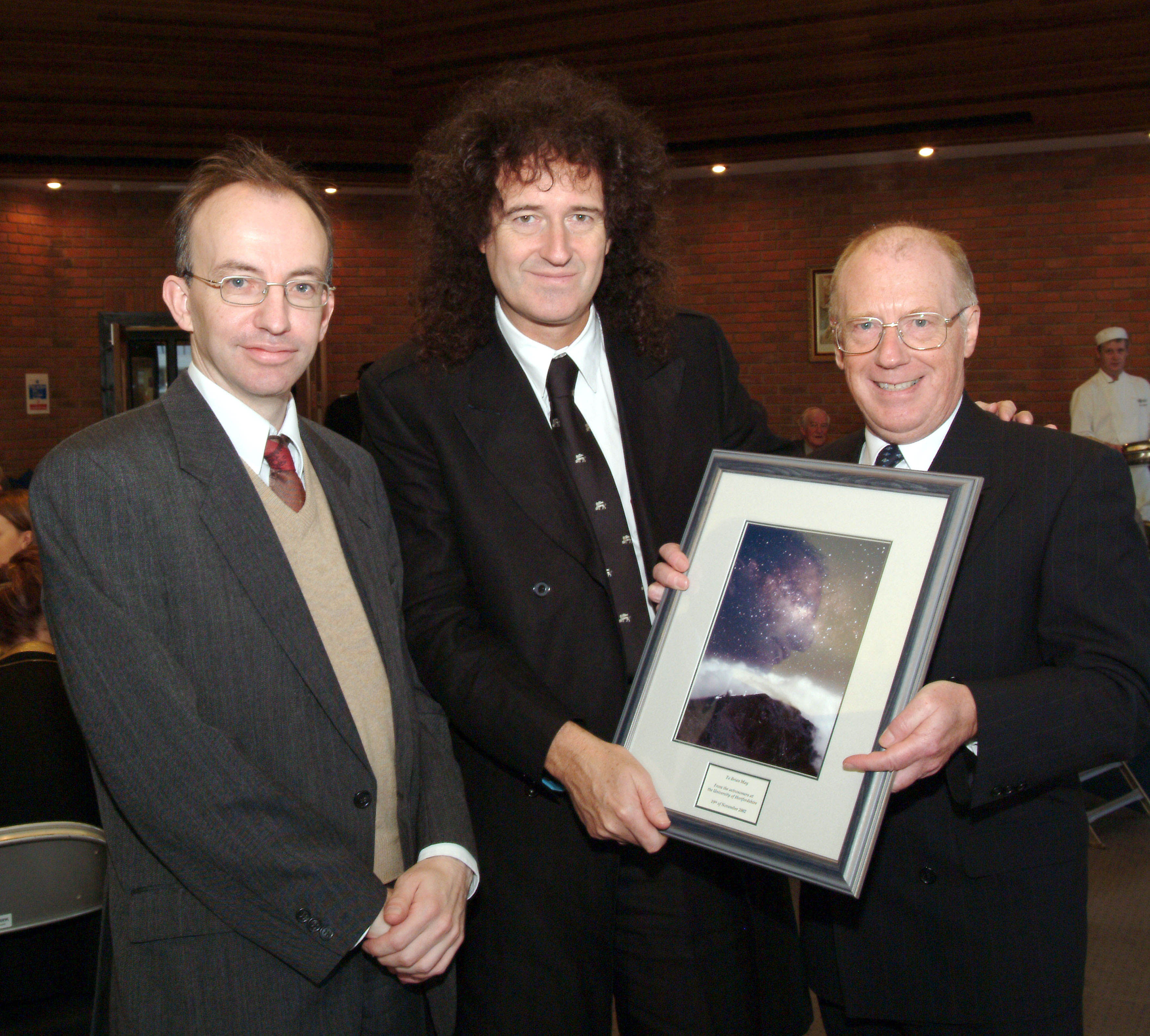
The University of Hertfordshire awarded an Honorary Science Doctorate to Brian May, a founding member of the rock group "Queen" and renowned rock guitarist. The photo shows Brian being presented with an astronomical photograph by James Hough (right) and colleague James Collett (left) after the honorary degree ceremony. Date November 2002.
Hatfield House and light scattering
Any gazetteer for visitors to Hatfield would be incomplete without a mention of Hatfield House, the ancestral home of the Cecil family. If you arrived by train, you can’t fail to have noticed the statue of the xth Lord Cecil atop the plinth outside the Main Gates. But rather than enter by these gates, we’ll take a detour through Old Hatfield and so enter the House close to its Elizabethan dining hall. This small diversion means we can pop into The Eight Bells, an inn (amongst many others admittedly) where Dickens stayed and used as a setting for Bill Sykes’ refuge in Oliver Twist. Hatfield’s inns were also scoured by Colonel Forster in Jane Austen’s Pride and Prejudice: he was searching for Lydia Bennett after her elopement with Wickham, but the reckless couple weren’t to be found here.
Elizabeth I learnt of her accession to the throne in the grounds of Hatfield House in 1558 when she was twenty five. There is a striking rainbow portrait of the Queen in the House painted by Isaac Oliver in the early seventeenth century. In a painting laced with symbolism, there is a tiny armillary sphere on her arm and a crescent jewel to represent the Lunar goddess in her headdress. But it is the rainbow that catches the eye, held like a steering wheel by the monarch as a symbol of peace in her dominion.
This is a nice cue to mention that one of the major research interests of the University is in light scattering. Analogue ice crystals have been constructed to produce light haloes in the laboratory and there is a new dedicated facility for the study of scattering by biological particles. This work and that of the quantum optics group rest daily on the observation that Thomas Young made on the interference of light waves – one of the most influential experiments in the history of physics. And so to one final tie with the past: in 1790, as a young man of seventeen, the polymath Young read and was inspired by Newton’s Opticks in Youngsbury, a country house just a few miles to the East of the University Observatory near Ware.
written by Professor Emeritus Jim Hough, former Director of the Centre for Astrophysics Research, and Dr Jim Collett, Principal Lecturer in the Department of Physics, Astronomy and Mathematics.

